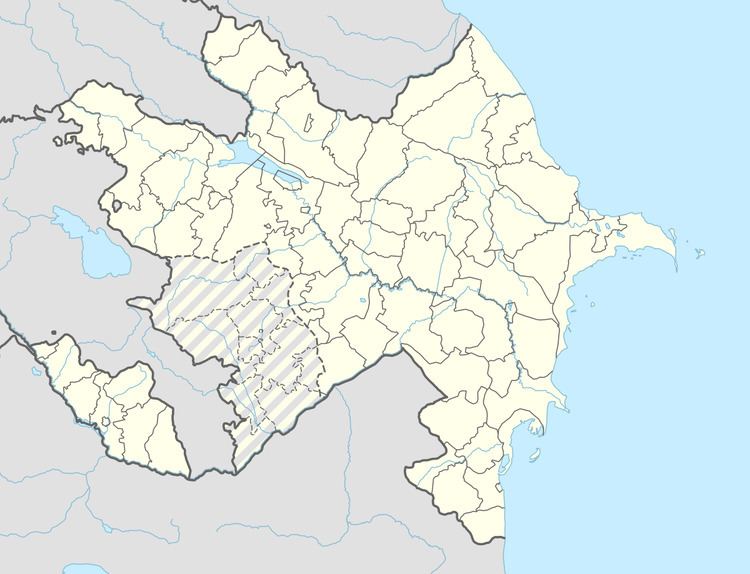Local time Monday 12:56 AM | Time zone AZT (UTC+4) | |
 | ||
Weather 4°C, Wind N at 8 km/h, 79% Humidity Rayons Nakhchivan Autonomous Republic, Babek District | ||
Kültəpə (also Aşağı Gültəpə, Gültəpə, and Kyul’tepe) is a settlement dated from the Eneolithic epoch, a village and municipality in the Babek Rayon of Nakhchivan, Azerbaijan. It has a population of 1,859.
Contents
Map of Kultepe, Azerbaijan
Research
In 1951, archeologist Osman Habibulla began excavation in the settlement, clarifying the stratigraphy and cultural strata of the area. The tell was much disturbed in the past.
As excavators had found, the town features a cultural layer with the total depth of 22 m. The earliest 9 m of this belongs to the Copper Age. Some Halaf culture artifacts have been found.
On top of that are the remains of the Bronze Age, and then the Early Iron Age.
At each of these layers a variety of artifacts were found: pottery dishes, cattle-breeding and agricultural implements, adornments, weapons etc.
In the Eneolithic layer the excavators discovered remains of buildings, as well as burial places. These buildings were round as well as rectangular-shaped, and were made of mudbrick. The diameter of the round constructions was around 6–8 meters. The rectangular ones are about 15 sq. m in size. These structures were typically connected with agriculture.
85 burial places were investigated in the Eneolithic layer. In 31 of those excavators found pottery dishes, items made of bones and stone, and beads.
Copper-arsenic
Soviet scientists decided that Kultepe (Kul'tepe) is the place where the first items made of copper-arsenic alloys, dating back to the 4th millennium BC, were found in the South Caucasus.
The local method of arsenic copper production was confirmed by results of chemical investigation and casting forms and the remains of casting discovered there.
Regional influence
Archaeological site Alikemek Tepesi is located in the Mugan plain along the Aras (river). Some archaeologists speak of the ancient Alikemek-Kul'tepe culture of southeastern Caucasus, that followed the Shulaveri-Shomu culture, and covered the transition from the Neolithic to Chalcolithic periods (c. 4500 BC). Aratashen (following level II) was also part of this culture.
The Alikemek–Kul'tepe culture covered the Ararat Plain, Nakhichevan, the Mil’skoj and Mugan Steppes and the region around Lake Urmia in north-western Iran
